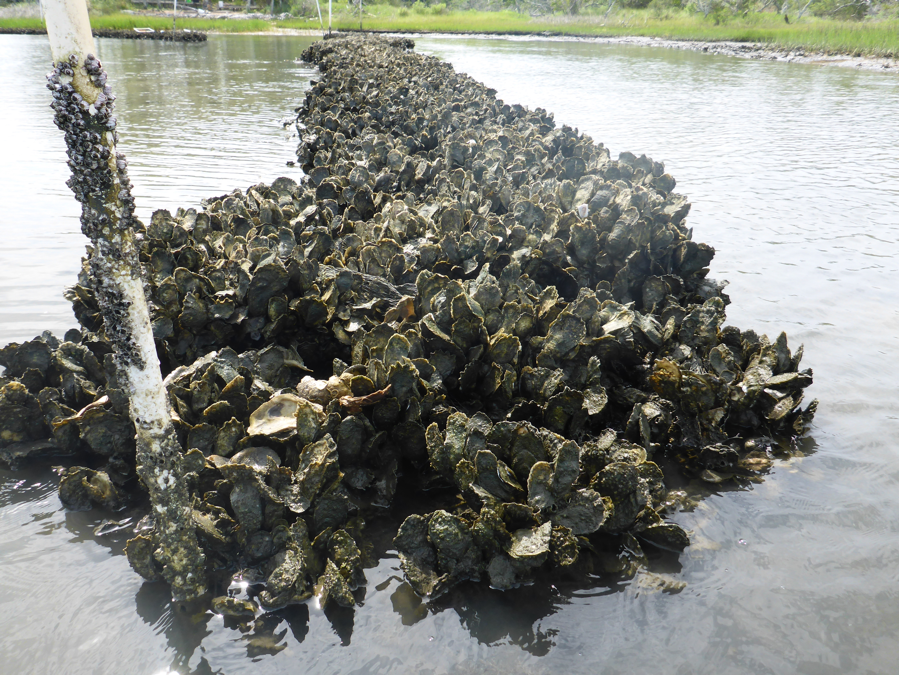By Kasia Grzebyk
Kasia Grzebyk is a Ph.D. student with the UNC Department of Environmental Sciences and Engineering and serves as a research assistant for the NC Policy Collaboratory.
North Carolina goes by many names. From the Old North State and First in Flight to the Tar Heel State and Southern Part of Heaven– North Carolina is home to a long list of nicknames and slogans. And soon, we may be able to add Napa Valley of Oysters to the roster.
North Carolina actually has a rich history in shellfish mariculture, with peak oyster production dating all the way back to 1902. However, despite our massive estuarine system (2.3 million acres!) and waters prime for mariculture, shellfishing in NC is not what it used to be. Thanks to a variety of anthropogenic influences and natural stressors, oyster populations and harvests have declined to a mere fraction of that produced in the early 1900s.
It’s not all bad news, though.
The industry is making a comeback, boasting significant growth in recent years. Water column leases (where shellfish are harvested) have been steadily increasing, and with them the production of oyster bushels. The number of applications for these leases has also grown, indicating a rising interest among coastal citizens to enter this budding market. Seventy-two lease applications were submitted in 2017 alone – more than double the average annual lease applications submitted over the last several years.

With growth comes hope and opportunity, but challenges do exist. Productive and sustained growth of the shellfish industry is dependent on various regulatory, societal, and economic factors that need consideration. The NC General Assembly, recognizing the cultural and economic significance of shellfishing in our State, recently passed legislation aimed at addressing these factors to advance our shellfish industry (Section 14.11(d)-(f) of S.L. 2016-94; Section 13.13(a)-(d) of S.L. 2017.57; Section 4.1 of S.L. 2017-197).
And thus, the Shellfish Mariculture Advisory Committee (SMAC) was born.
SMAC is a group organized by the North Carolina Policy Collaboratory to fulfill the mandates set forth by the General Assembly. It is composed of over 100 members from incredibly diverse backgrounds – academia, law, business, industry, regulatory agencies, and NGOs, to name a few. They have been tasked with preparing a Shellfish Mariculture Plan for the General Assembly – a report of findings and recommendations aimed at bolstering NC’s shellfish industry.
Since its inception in 2017, SMAC has been meeting and strategizing on a regular basis, evaluating the current state of shellfish in NC and identifying areas that could benefit from regulatory improvements. Combining their expertise with background research into other states’ mariculture plans, SMAC identified five areas that warrant legislative action:
- Key Metrics and Business Climate
- Industry Governance & Leadership
- Siting Shellfish Mariculture
- Water Quality
- Applied Research and Development
Significant progress has been made on the Shellfish Mariculture Plan, and SMAC is on schedule to submit its findings and recommendations to the General Assembly by the end of the year. Their report outlines a strategic vision for the sustainable growth and support of shellfish mariculture during years 2020-2030, with a goal of establishing a $100 million industry.

SMAC serves as a great example of leaders from disparate fields coming together to enhance both the economic and environmental health of our State. With the wealth of expertise from groups like SMAC, support from our state legislature, and our coastal waters prime for shellfish growth, it’s only a matter of time before we become the Napa Valley of Oysters.

